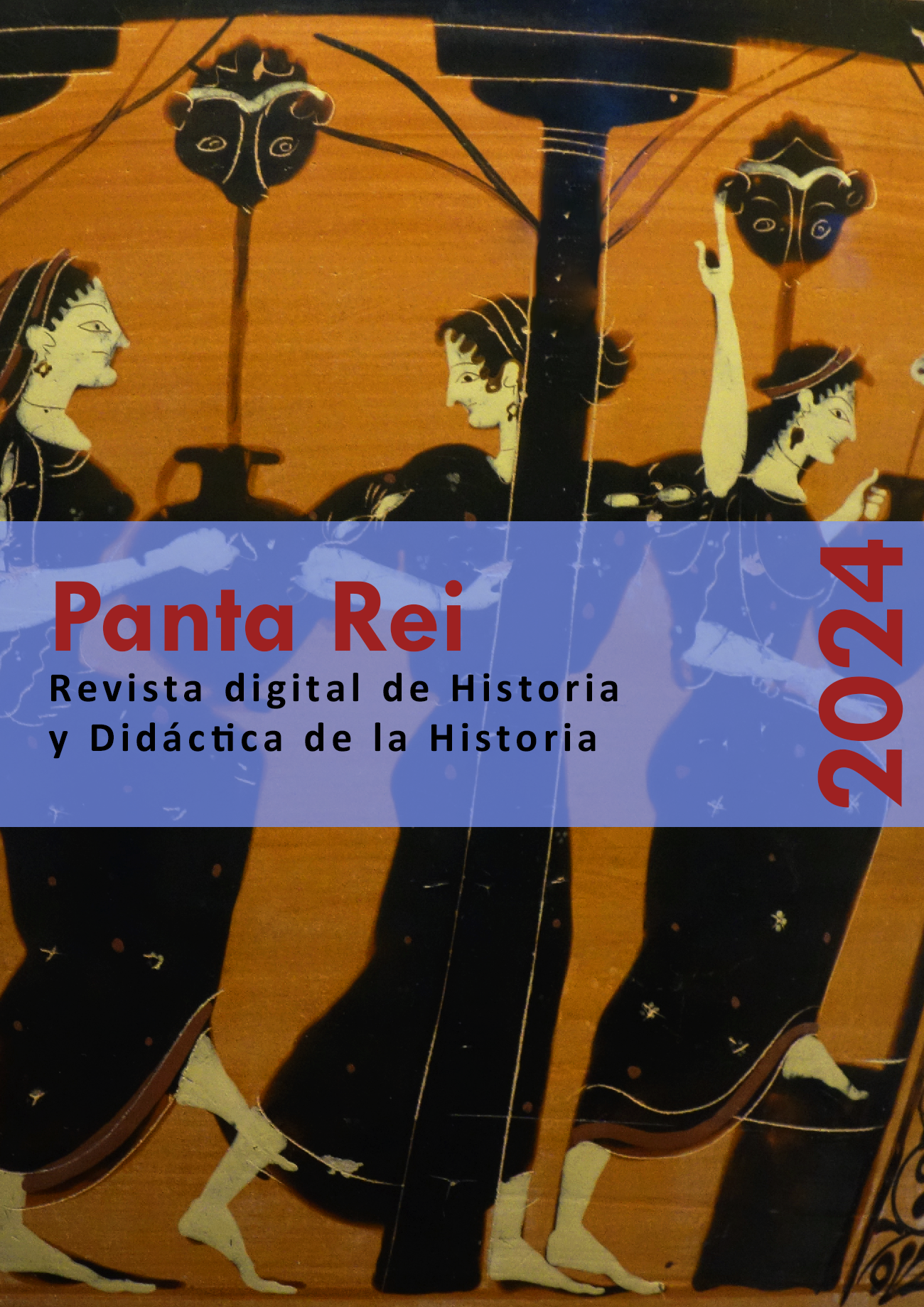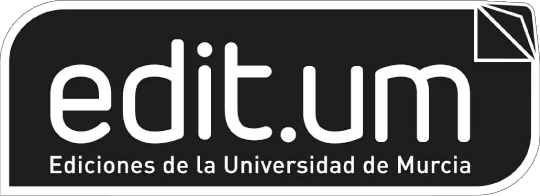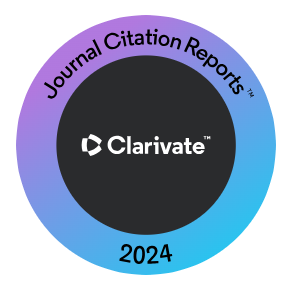Digital Resources for Teaching and Learning History. A Research Review
Supporting Agencies
- This work is part of the post-doctoral internship project Digital technologies in the teaching and learning of history: the uses of TDCIS and digital materials, and result of a postdoctoral stay (AT_ESTPDI24_25), supervised by Prof. Dr. Jesus Rodríguez Rodríguez at the Faculty of Education of the University of Santiago de Compostela. The project was funded by the Federal University of Mato Grosso, Brazil. Special thanks go to Prof. Dr. Tânia Braga Garcia, coordinator of the Didactic Publishing Research Center - NPPD at the Federal University of Paraná, Brazil.
Abstract
The teaching and learning processes of History are mediated by the educational resources that teachers decide to use in their subject. It is interesting to analyze the use and impact of digital educational resources in these processes. This work consists, on the one hand, of a bibliometric study that quantifies the scientific production of the last decade through the analysis of 116 documents retrieved from the Scopus database and, on the other hand, of a content analysis that delves into the scientific evidence. The results confirm that we are facing an emerging field of research in recent years and that the subject is widespread, being studied by different countries and institutions. On the other hand, given the number of documents analyzed, we conclude that more efforts are needed in this field, especially in the evaluation of digital resources used in the teaching/learning of history.
Downloads
-
Abstract1504
-
PDF424
-
EPUB104
References
Altman, D.G. (1991). Practical statistics for medical research. Chapman and Hall.
Álvarez-Sepúlveda, H. (2023). La Inteligencia Artificial como catalizador en la Enseñanza de la Historia: Retos y Posibilidades Pedagógicas. Revista Tecnológica- Educativa Docentes 2.0, 16(2), 318-325. https://doi.org/10.37843/rted.v16i2.426
Anderson, J., Chung, Y., & Macleroy, V. (2018). Creative and critical approaches to language learning and digital technology: findings from a multilingual digital storytelling project. Language and Education, 32, 195-211. https://doi.org/10.1080/09500782.2018.1430151
Astudillo, M. P., & Marín-Suelves, D. (2023). TIC para la superación de desigualdades. Lo que señala la evidencia científica. REIDOCREA, 12, 42-53. https://doi.org/10.30827/Digibug.80032
Aurel-Railean, E. (2017). User Interface Design of Digital Textbook. How Screens Affect Learning. Springer.
Baker, J., Shahab, S., & Tadros, M. (2021). Co-Constructing Digital Archiving Practices for Community Heritage Preservation in Egypt and Iraq. Preservation, Digital Technology and Culture, 50, 85-96. https://doi.org/10.1515/pdtc-2021-0018
Barrios, H., Díaz, V., & Guerra, Y. (2021). Propósitos de la educación frente a desarrollos de inteligencia artificial. Cadernos de Pesquisa, (51), 1-18. https://doi.org/10.1590/198053147767
Beavis, C., O’Mara, J., & Thompson, R. (2021). Digital games in the museum: perspectives and priorities in videogame design. Learn Media Technology, 46, 294-305. https://doi.org/10.1080/17439884.2021.1896539
Berliner, A.J., & Hecla, J. (2023). Nuclear history, politics, and futures from (A)toms to(Z)oom: Design and deployment of a remote-learning special-topics course for nuclear engineering education. Frontiers in Education, 7, 1-19. https://doi.org/10.3389/feduc.2022.868052
Bin-Baba, S., Salleh, M. J., Zayed, T. M., & Harris, R. (2018). Historical development of Islamic integrated education in Malaysia since 15th century: Current needs for the Globalized world. History of Education and Children's Literature, 13, 9-30. http://irep.iium.edu.my/70623/
Bonam, B., Piazentin, L., & Dala, A. (2020). Educación, Big data e inteligencia artificial: Metodologías mixtas en plataformas digitales. Comunicar, 65, 43-52. https://doi.org/10.3916/C65-2020-04
Bornemann, M., Alwert, K., & Will, M. (2021). Lessons learned in intellectual capital management in Germany between 2000 and 2020. History, applications, outlook. Journal of Intellectual Capital, 22, 560-586. https://doi.org/10.1108/JIC-03-2020-0085
Bozzelli, G., Raia, A., Ricciardi, S., De Nino, M., Barile, N., Perrella, M., Tramontano, M., Pagano, A., & Palombini, A. (2019). An integrated VR/AR framework for user-centric interactive experience of cultural heritage: The ArkaeVision project. Digital Applications in Archaeology and Cultural Heritage, 15, 1-14. https://doi.org/10.1016/j.daach.2019.e00124
Cabero-Almenara, J., & Palacios-Rodríguez, A. (2021). The evaluation of virtual education: E-activities. RIED. Revista Iberoamericana de Educação a Distancia, 24, 169-188. https://doi.org/10.5944/ried.24.2.28994
Carrasco-Rodríguez, A. (2023). Reinventando la enseñanza de la Historia Moderna en Secundaria: la utilización de ChatGPT para potenciar el aprendizaje y la innovación docente. Studia Historica: Historia Moderna, 45(1), 101–145. https://doi.org/10.14201/shhmo2023451101146
Castells, M. (2008). Un mapa de sus interacciones. Revista Telos, 77, 1–7. https://telos.fundaciontelefonica.com/archivo/numero077/un-mapa-de-sus-interacciones/?output=pdf
Černý, M., Kalmárová, K., Martonová, M., Mazáčová, P., Škyřík, P., Štěpánek, J., & Vokrál, J. (2023). Nonlinear Interactive Stories as an Educational Resource. Education Sciences, 13, 1-23. https://doi.org/10.3390/educsci13010040
Chin, K., Lee, K., & Chen, Y. (2018). Using an interactive ubiquitous learning system to enhance authentic learning experiences in a cultural heritage course. Interactive Learning Environments, 26, 444-459. https://doi.org/10.1080/10494820.2017.1341939
Ciriza-Mendívil, C. D., Lacambra, A. M., & Hernández de la Cruz, J. M. (2022). Technological Pedagogical Content Knowledge: Implementation of a Didactic Proposal for Preservice History Teachers. Frontiers in Education, 7, 1-10. https://doi.org/10.3389/feduc.2022.852801
Cortez, A., Koy, A., & Lizárraga, J. R. (2022). The Future of Young Blacktivism: Aesthetics and Practices of Speculative Activism in Video Game Play. Journal of Futures Studies, 26, 53-70. https://jfsdigital.org/the-future-of-young-blacktivism-aesthetics-and-practices-of-speculative-activism-in-video-game-play/
Damala, A., Hornecker, E., van der Vaart, M., van Dijk, D., & Ruthven I. (2016). The loupe: Tangible augmented reality for learning to look at ancient Greek art. Mediterranean Archaeology and Archaeometry, 16, 73-85. https://doi.org/10.5281/zenodo.204970
Davis, A. M., McCullough, J., Panciera, B., & Parmer, R. (2017). Faculty–library collaborations in digital history: A case study of the travel journal of Cornelius B. Gold. College and Undergraduate Libraries, 24, 482-500. https://kb.osu.edu/server/api/core/bitstreams/d63b3d74-7c29-41e2-8e6f-232a97558ad6/content
Dias-Trindade, S., Ferreira, A. G., & Moreira, J. A. (2021). Overview of the history of Technology in Education in the pre-digital era: The slow technological evolution in Portuguese schools from the end of the 19th century to the beginning of computerized education. Praxis Educativa, 16, 1-20. https://doi.org/10.5212/PraxEduc.v.16.17294.044
Egea-Vivancos, A., & Arias-Ferrer, L. (2021). Principles for the design of a history and heritage game based on the evaluation of immersive virtual reality video games. E-learning and digital media, 18(4), 383-402. https://doi.org/10.1177/2042753020980103
García-Bustos, M., Rivero, O., Bustos, P. G., & Mateo-Pellitero, A. M. (2023). From the cave to the virtual museum: accessibility and democratisation of franco-cantabrian palaeolithic art. Virtual Archaeology Review, 14, 54-64. https://doi.org/10.4995/var.2023.17684
Gillate, I., Castrillo, J., Luna, U., & Ibáñez-Etxeberria, A. (2023). Historical memory and apps to develop social and civic competence: effects of the 1936 Project on teachers in initial training. Revista Complutense de Educación, 34, 203-215. https://doi.org/10.5209/rced.77252
Gómez-Carrasco, C. J., Rodríguez-Medina, J., Chaparro, Á., & Alonso, S. (2022). Recursos digitales y enfoques de enseñanza en la formación inicial del profesorado de Historia. Educación XX1, 25, 143-170. https://doi.org/10.5944/educxx1.30483
Gómez, J. L., Bonilla, C. A., & Esteban, Y. K. (2022). Uso de TIC y TAC en la educación superior: Un análisis bibliométrico. Revista Complutense de Educación, 33, 601-613. https://doi.org/10.5209/rced.73922
Gross, B. (1992). La inteligencia artificial y su aplicación en la enseñanza. CL&E, 13, 73-80.
Gutiérrez-González, C., Caicedo, L. M., Maldonado, L. E., & Cubillos, Y. T. (2023). Análisis de la producción científica relacionada con Recursos Educativos Digitales (RED) y Objetos Virtuales de Aprendizaje (OVA), entre 2000–2021. Revista de Investigación Educativa, 41, 263-280. https://doi.org/10.6018/rie.518741
Hao, L. (2023). Chopsticks and clothes: Chinese heritage parents' perspectives on young children's technology use as a tool for language and cultural learning. Literacy, 57, 28-39. https://doi.org/10.1111/lit.12312
Hernàndez-Cardona, F.X., Feliu-Torruella, M., Sospedra-Roca, R., & Boj-Cullell, I. (2022). Audiovisual narrative, re-enactment, and historical education: Hospitals in the Spanish Civil War. Frontiers in Education, 7, art. no. 979175. https://doi.org/10.3389/feduc.2022.979175
Huh, S., Shin, S.-J., & Chang, K. (2017). The potential of creative digital humanities in teaching culinary history and culture: A Korean perspective. Advanced Science Letters, 23, 9449-9452. https://doi.org/10.1166/asl.2017.9722
Inacio-Flores, F. A., Capuñay-Sánchez, D. L., Estela-Urbina, R. O., Valles-Coral, M. Á., Vergara-Medrano, S. E., & Elera-Gonzales, D. G. (2022). Inteligencia artificial en educación: una revisión de la literature en revistas científicas internacionales. Apuntes Universitarios, 12(1), 135-152. http://doi.org/10.17162/au.v12i1.974
Jadresin-Milic, R., McPherson, P., McConchie, G., Reutlinger, T., & Singh, S. (2022). Architectural History and Sustainable Architectural Heritage Education: Digitalisation of Heritage in New Zealand. Sustainability, 14, 1-17. https://doi.org/10.3390/su142416432
Kasapoğlu Akyol, P. (2016). Applying the intangible cultural heritage into the formal education: A webquest example. Milli Folk, 111, 149-170. https://www.millifolklor.com/PdfViewer.aspx?Sayi=111&Sayfa=149
Klopfer, L. E., & Aikenhead, G. S. (2022). Humanistic science education: The history of science and other relevant contexts, Science Education, 106, 490-504. https://doi.org/10.1002/sce.21700
López-Gómez, S., & Rodríguez-Rodríguez, J. (2021). Los videojuegos en la escuela, la universidad y los contextos sociocomunitarios. Octaedro.
López, L., Rodríguez, A., Figueredo, J., & Polanco, R. (2022). Educación y realidad aumentada: Un análisis bibliométrico e identificación de tendencias. Revista científica e online tech, 1, 97-122. https://doi.org/10.53485/ret.v1i3.270
Lucca, D. (2022). History teaching and textbook in the geopolitics of knowledge in Timor-Leste. Educação e Pesquisa, 4, 1-18. https://doi.org/10.1590/S1678-4634202248238720
Marcinkowski, R. (2018). A. Steep roof design: A combination of history and geometry as part of an interdisciplinary education for architects. World Transactions on Engineering and Technology Education, 16, 23-28. http://www.wiete.com.au/journals/WTE&TE/Pages/Vol.16,%20No.1%20(2018)/04-Marcinkowski-R.pdf
Marín-Suelves, D., Cuevas-Monzonís, N., & Gabarda-Méndez, V. (2021). Competencia digital ciudadana: Análisis de tendencias en el ámbito educativo. RIED. Revista iberoamericana de educación a distancia, 24(2), 329-349. DOI:10.5944/RIED.24.2.30006
Markova, T. B. (2019). The library as a form of cultures communication. Discourse, 5, 41-54. https://doi.org/10.32603/2412-8562-2019-5-5-41-54
Marinensi G., Matera, C. (2013). Creating e-learning history of art courses in higher education. Journal of E-Learning and Knowledge Society, 9, 81-91. https://doi.org/10.20368/1971-8829/815
Martínez, T., López, V., Asensio, M., & Santacana. J. (2018). ¿Entretener o aprender? La evaluación de las tecnologías móviles en la Didáctica del Patrimonio. Ensayos. Revista de la Facultad de Educación de Albacete, 33, 39-52. https://doi.org/10.18239/ensayos.v33i1.1738
Martínez, J. C. B., & Rubio, J. C. C. (2018). Research theory and methodology on textbooks: Didactic analysis of activities, pictures and digital resources in social sciences education. Revista Brasileira de Educação, 23, 1-23. https://doi.org/10.1590/s1413-24782018230082.
Martínez, N; Valls, R., & Pineda, F. (2009). El uso del libro de texto de Historia de España en Bachillerato: diez años de estudio, 1993-2003, y dos reformas (LGE-LOGSE). Didáctica de las Ciencias Experimentales y Sociales, 23, 3-35. https://ojs.uv.es/index.php/dces/article/view/2405
Martínez, J. M., Egea, A., & Arias, L. (2018). Evaluación de un videojuego educativo de contenido histórico. La opinión de los estudiantes. RELATEC, 17(1), 61-75. https://doi.org/10.17398/1695-288X.17.1.61
Mead, C., Bruce, G., Taylor, W., Buxner, S., & Anbar, A. D. (2022). Gamifying Virtual Exploration of the Past 350 Million Years of Vertebrate Evolution. Frontiers in Education, 7, 1-10. https://doi.org/10.3389/feduc.2022.836783
Meseguer, A. J., Arias, L., & Egea, A. (2022). La arqueología en las aulas: análisis de su representación en los libros de texto. En A.J. Farrujia (coord.) Patrimonio cultural, género y educación. Los libros de texto como transmissores del conocimiento en primaria y secundaria. Octaedro (pp. 107-128).
Mills-Kelly, T. (2013). Teaching history in the digital age. University of Michigan Press.
Monteagudo‐Fernández, J., Rodríguez‐Pérez, R. A., Escribano-Miralles, A., & Rodríguez-García, A. M. (2020). Perceptions of secondary education students on the teaching of history, through the use of ICT and digital resources. Revista Electronica Interuniversitaria de Formación del Profesorado, 23, 67-79. https://doi.org/10.1057/s41599-020-00619-3
Nafi'ah, U., & Mashuri-Wijaya D. N. (2019). The development of digital book of European history to shape the students' democratic values. International Journal of Emerging Technologies in Learning, 14, 147-154. https://doi.org/10.3991/ijet.v14i06.9760
Ortega-Sánchez D., & Gómez-Trigueros, I. M. (2019). Didactics of historical-cultural heritage QR codes and the TPACK model: An analytic revision of three classroom experiences in Spanish higher education contexts. Education Sciences, 9, 1-10. https://doi.org/10.3390/educsci9020117
Parada-Gañete, A., Rodríguez-Regueira, A., Rodríguez-Guimeráns, A., & López-Gómez, S. (2024). Transformando la clase de Historia: IA y Aprendizaje Innovador. En O. Rodrígues-Junior, R. García-Morís, & J. Rodríguez-Rodríguez (coords), Investigaciones y experiencias de lo digital en los procesos de enseñanza y aprendizaje de Historia. Dykinson.
Prats, J. (2000). Dificultades para la enseñanza de la historia de la educación secundaria: Reflexiones ante la situación española. Revista de teoría y didáctica de las Ciencias Sociales, 5, 71-98. https://www.redalyc.org/pdf/652/65200505.pdf
Peirats-Chacón, J., Marín-Suelves, D., Granados-Saiz, J., & Morote-Blanco, D. (2018). Competencia digital en los planes de estudio de universidades públicas españolas. REDU. Revista de Docencia Universitaria, 16(1), 175-191. https://doi.org/10.4995/redu.2018.8935
Puche J. (2019). Digital tools to enhance the teaching-learning process of humanities: The case of economic history. Caracteres, 8, 129-155. https://zaguan.unizar.es/record/99335/files/texto_completo.pdf?version=1
Potočnik, D. (2017). Modern methods of teaching history. Ann An Istrske Mediterr. Annales-Analiza Istrske in Mediteranske Studije - Series Historia et Sociologia, 27, 837-850. https://doi.org/10.19233/ASHS.2017.59
Prensky, M. (2011). Enseñar a nativos digitales. SM.
Rego-Agraso, L., Iglesias-Amorín, F., Fernández-Esteban, M. I., & Donato, D. (2023). Hallazgos y resultados del análisis intercasos. En Area-Moreira, M, et al. (coords), Infanci@ Digit@l. Los recursos educativos digitales en educación infantil (pp. 185-206). Graó: Barcelona, España; pp. 185-206.
Roda-Segarra, J. (2023). La investigación bibliométrica en historia de la educación. Situación actual, desarrollo de bases de datos específicas y propuestas desde la inteligencia artificial. Tesis doctoral, Universitat de València, Valencia, 2023.
Rodríguez-Regueira, N., & Rodríguez-Rodríguez, J. (2023). Analysis of digital textbooks. Educational Media International, 59(2), 172-187. 10.1080/09523987.2022.2101207
Rodríguez, J., Castro, M. M., López, S., & Marín-Suelves, D. (2023). El libro de texto en la investigación reciente: ¿qué hay de nuevo? In J. Rodríguez-Rodríguez; C. Martínez-Delgado; & C. Delgado-Amo (Coord), Discusiones actuales alrededor del libro de texto escolar. Octaedro, pp. 21-27.
Romero-López, D. (2018). The Mnemosine Digital Library and its collections: Towards a digital history of the Silver Age. Ibersid, 12, 45-53. https://www.ibersid.eu/ojs/index.php/ibersid/article/view/4486/3929
Sánchez, E., Gabarda, V., & Marín-Suelves, D. (2024). La competencia digital docente en Educación Secundaria: analizando la evidencia científica. Hachetetepé. Revista científica de Educación y Comunicación, 28,1-32. http://doi.org/10.25267/Hachetetepe.2024.i28.1204
Sánchez-García, J. M., & Toledo-Morales, P. (2018). Uso de las Tecnologías de la Información y Comunicación en la enseñanza de historia. Aposta. Revista de Ciencias Sociales, 78, 8-32. https://www.redalyc.org/journal/4959/495958406001/
Santacana-Mestre J. (2017). Educar en la generación app: el desafío del futuro. En Arce, X. C. M (coord.). Ensinar na Sociedade Actual. Andavira: Santiago de Compostela, España, pp. 377-401.
Santacana-Mestre, J., Martínez-Gil, T.; Llonch-Molina, N., & López-Benito, V. (2016). ¿Qué opinan los adolescentes sobre los museos y la didáctica? Didáctica de las ciencias experimentales y sociales, 31, 23-38. https://doi.org/10.7203/dces.31.8795
Santana, P.; Sanabria, A. I. (2015). Claves para la transformación organizativa. Monográfico. ¿Qué pasa con la escuela TIC? Cuadernos de Pedagogía, 462, 73-76.
Santamaría, P., & Giraldo, M. I. (2020). The city as curriculum and educational device. A cultural heritage teaching proposal. Bitacora Urban Territorial, 30, 71-82. https://doi.org/10.15446/bitacora.v30n3.79987
Squibb, S.D., Koehler, C., & Shiroma, J. (2023). Engaging neglected histories First-year students, archives, and Wikipedia. College and Research Libraries News, 84, 103-109. https://crln.acrl.org/index.php/crlnews/article/view/25822/33766
Saripudin, D., Fauzi, W, I., & Nugraha, E. (2022). The development of interactive E-book of local history for senior high school in improving local wisdom and digital literacy. European Journal of Educational Research, 11, 17-31. https://doi.org/10.12973/eu-jer.11.1.17
Şengül Bircan, T. (2016). The effect of teaching history of the based technology to the academic achievement and perception of space of the students. Hacettepe Egitim Dergisi, 31, 564-577. https://doi.org/10.16986/HUJE.2015014658
Soboleva, E. V., Sokolova, A. N., Isupova, N. I., & Suvorova, T. N. (2017). Use of training programs based on gaming platforms for improving the effectiveness of education. Novosibirsk State Pedagogical University Bulletin, 7, 7-25. http://dx.doi.org/10.15293/2226-3365.1704.01
Tausendfreund, D., Timofeeva, N. P, & Evdokimova, T. V. (2019). Forced labor in Nazi Germany: Online archive of Interviews and related educational online platform. Science Journal of VolSU, 24, 183-195. https://doi.org/10.17169/refubium-2874
Ticona, E., Texeira, M. Â., & Correia, G. C. (2022). La utilización de Iramuteq en investigaciones educativas: una perspectiva cualicuantitativa para el análisis de datos textuales: Studies in Education Sciences, 3, 1059-1069. https://doi.org/10.54019/sesv3n3-004
Tilak, S., Glassman, M., Lu, M., Wen, Z., Pelfrey, L., Kuznetcova, I., Lin, T-J., Anderman, E. M., Calvit, A. M., Ching, K., & Nagpal, M. (2023). Investigating social studies teachers’ implementation of an immersive history curricular unit as a cybernetic zone of proximal development. Cogent Education, 10, 1-29. https://doi.org/10.1080/2331186X.2023.2171183
Toktamysov S., Alwaely, S.A., & Gallyamova Z. (2023). Digital technologies in history training: the impact on students academic performance. Education and Information Technology, 28, 2173-2186. http://dx.doi.org/10.1007/s10639-022-11210-5
Thomsen, M., Jankvist, U. T; & Clark, K. M. (2022). The interplay between history of Mathematics and Digital Technologies: a review ZDM - Mathematics Education, 54, 1631-1642. https://doi.org/10.1007/s11858-022-01368-0
Uljanatunnisa, U., Ayuningtya, F., & Sevilla, V. (2020). Using Instagram Museum Nasional as a Historical Education Media through e-Publication to Engage Audiences. Library Philosophy and Practice, 4643. https://digitalcommons.unl.edu/cgi/viewcontent.cgi?article=8686&context=libphilprac
UNESCO. (2023). Consenso de Beijing sobre la inteligencia artificial y la educación. Perfiles Educativos, 45(180), 176-182. https://doi.org/10.22201/iisue.24486167e.2023.180.61303
Urrútia, G., & Bonfill, X. (2010). Declaración PRISMA: una propuesta para mejorar la publicación de revisiones sistemáticas y metaanálisis. Medicina clínica, 135, 507-511. https://www.elsevier.es/es-revista-medicina-clinica-2-articulo-declaracion-prisma-una-propuesta-mejorar-S0025775310001454
Van-Eck, N.J., & Waltman, L. (2011) Text mining and visualization using VOSviewer. arXiv preprint arXiv.1109.2058. https://arxiv.org/pdf/1109.2058.pdf
Villena-Taranilla, R., Cózar-Gutiérrez, R., González-Calero, J. A., & López Cirugeda, I. (2022). Strolling through a city of the Roman Empire: an analysis of the potential of virtual reality to teach history in Primary Education. Interactive Learning Environments, 30, 608-618. https://doi.org/10.1080/10494820.2019.1674886
Wright, K. D., Wright, D. K., Wiltshire, N., & Lavin, J. (2023). Digital Kitambo: Decolonising narratives and bringing the past into the future at the National Museums of Kenya. Herança - History, Heritage and Culture Journal, 6, 115-131. https://doi.org/10.52152/heranca.v6i1.667
Copyright (c) 2024 Osvaldo Rodrigues Junior, Diana Marín Suelves, Silvia López Gómez, Jesus Rodríguez Rodríguez

This work is licensed under a Creative Commons Attribution-ShareAlike 4.0 International License.
All the contents published in this journal are subject to an Attribution-ShareAlike 4.0 International (CC BY-SA 4.0) Creative Commons License. You are free to: Share — copy and redistribute the material in any medium or format, Adapt — remix, transform, and build upon the material, for any purpose, even commercially. Under the following terms:
Attribution — You must give appropriate credit, provide a link to the license, and indicate if changes were made. You may do so in any reasonable manner, but not in any way that suggests the licensor endorses you or your use.
ShareAlike — If you remix, transform, or build upon the material, you must distribute your contributions under the same license as the original.
Full text of the license is available in: Creative Commons License 












